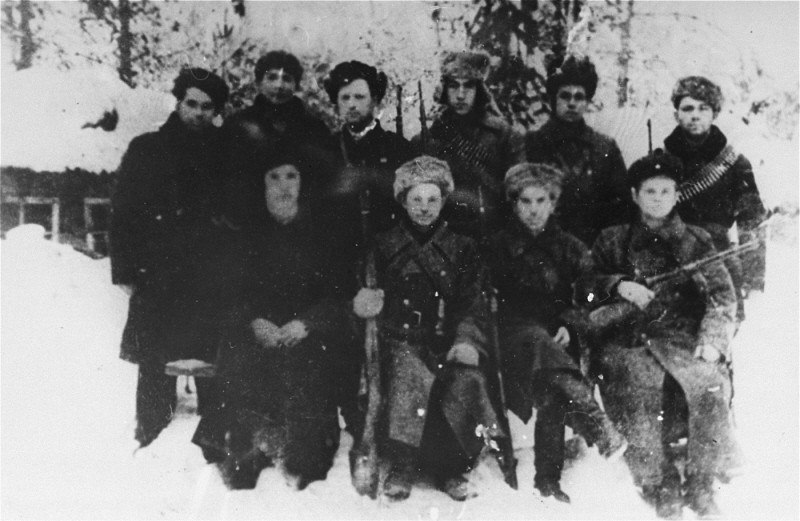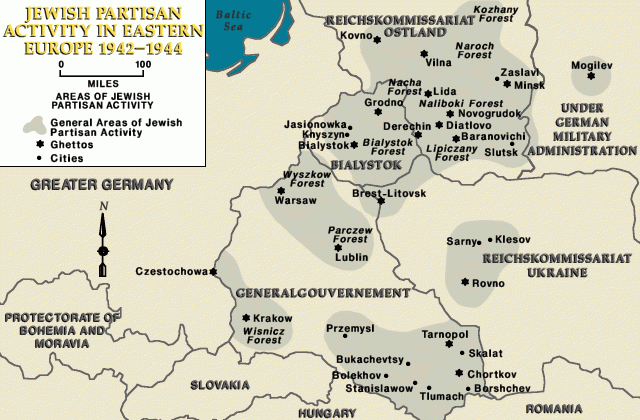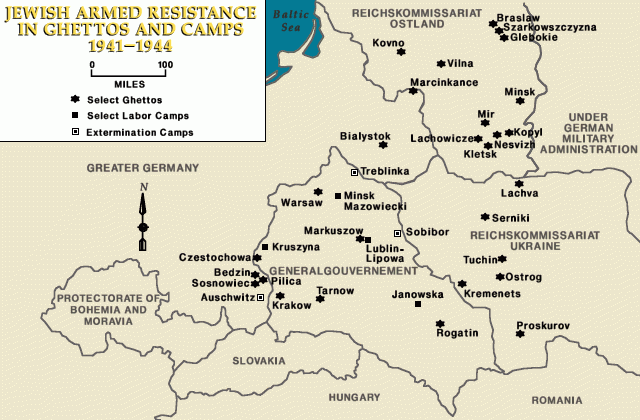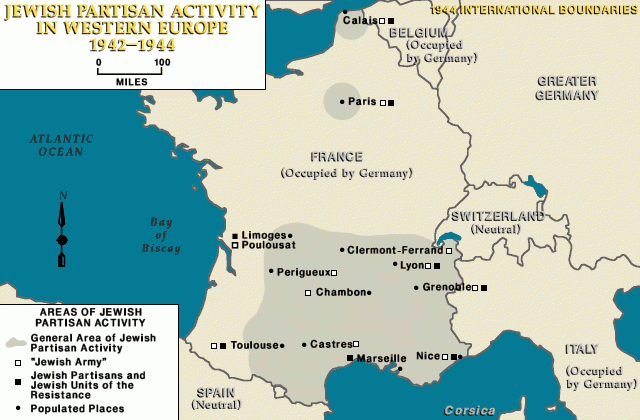
Armed Jewish Resistance: Partisans
Despite great obstacles, Jews throughout occupied Europe attempted armed resistance against the Germans and their Axis partners. They faced overwhelming odds and desperate scenarios, including lack of weapons and training, operating in hostile zones, parting from family members, and facing an ever-present Nazi terror. Yet thousands resisted by joining or forming partisan units.
Most Jewish armed resistance took place after 1942, as a desperate effort, after it became clear to those who resisted that the Nazis had murdered most of their families and their coreligionists. Despite great obstacles (such as lack of armaments and training, conducting operations in a hostile zone, reluctance to leave families behind, and the ever-present Nazi terror), many Jews throughout German-occupied Europe attempted armed resistance against the Germans. As individuals and in groups, Jews engaged in opposition to the Germans and their Axis partners. Jewish resistance units operated in France, Belgium, Ukraine, Belorussia, Lithuania, and Poland. Jews also fought in non-Jewish French, Italian, Yugoslav, Greek, Polish, and Soviet resistance organizations.
Armed Jewish Resistance in Eastern Europe

In eastern Europe, Jewish units fought the Germans in city ghettos and behind the front lines in the forests. While most Jewish armed resistance began in 1943, it should be noted that most general non-Jewish resistance movements in the region, operating under more favorable circumstances and with a more sympathetic local population, also did not start until 1943.
Despite minimal support and even antisemitic hostility from the surrounding population, thousands of Jews battled the Germans in eastern Europe. Resistance units emerged in over 100 ghettos in Poland, Lithuania, Belorussia, and Ukraine. Jews resisted when the Germans attempted to establish ghettos in a number of small towns in eastern Poland in 1942. Revolts took place in Starodubsk, Kletsk, Lachva, Mir, Tuchin, and several other towns. As the Germans liquidated the major ghettos in 1943, they met with armed Jewish resistance in Krakow (Cracow), Bialystok, Czestochowa, Bedzin, Sosnowiec, and Tarnow, as well as a major uprising in Warsaw. Thousands of Jews escaped from the ghettos and joined partisan units in nearby forests. Jews from Minsk, for example, established seven partisan fighting units. Jews from Vilna, Riga, and Kovno also formed resistance units.
In western Belorussia, western Ukraine, and eastern Poland, family camps were established in which Jewish civilians repaired weapons, made clothing, cooked for the fighters, and assisted Soviet partisan operations. As many as 10,000 Jews survived the war by taking refuge with Jewish partisan units. The camp established by Tuvia Bielski in the Naliboki Forest in 1942, for example, gave refuge to more than 1,200 Jews.
There were even uprisings in the killing centers of Treblinka, Sobibor, and Auschwitz during 1943-1944.

Armed Jewish Resistance in Western Europe

In France, the "Armée Juive" (Jewish Army), a French Jewish partisan group, was founded in Toulouse in January 1942. Composed of members of Zionist youth movements, the Jewish Army operated in and around Toulouse, Nice, Lyon, and Paris. Its members smuggled money from Switzerland into France to assist Jews in hiding, smuggled at least 500 Jews and non-Jews into neutral Spain, and took part in the 1944 uprisings against the Germans in Paris, Lyon, and Toulouse. "Solidarité," a Jewish Communist unit, also carried out attacks on German personnel in Paris. Many Jews joined the general French resistance as well.
In Belgium, a combined Jewish and non-Jewish resistance unit (also named "Solidarité") derailed a deportation train in April 1943. On July 25, 1942, Jewish resisters attacked and burned the files of the organization that the Nazis had forced on the Jews of Belgium. Jews were also active in the Dutch and Italian underground movements.
The impact of armed Jewish resistance should not be exaggerated. It did little to stop the Nazi apparatus from implementing the mass murder of the Jews. Most Jewish resistance to the Nazis focused on rescue, escape, aid to those in hiding, and spiritual resistance. Nevertheless, organized armed resistance was the most direct form of Jewish opposition to the Nazis.
Critical Thinking Questions
- What obstacles and limitations did Jews face when considering resistance?
- What resources and abilities might resisters need to fight back against a regime? Consider how filling these needs was often challenging for Jews during the Holocaust.

